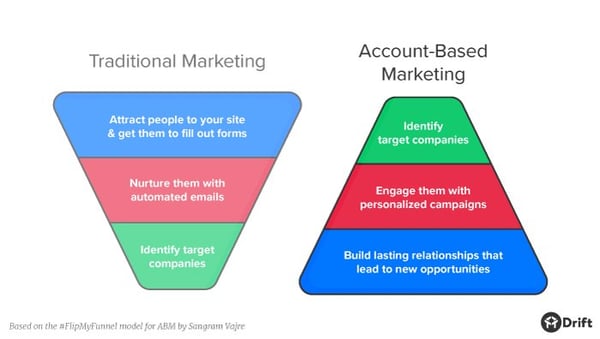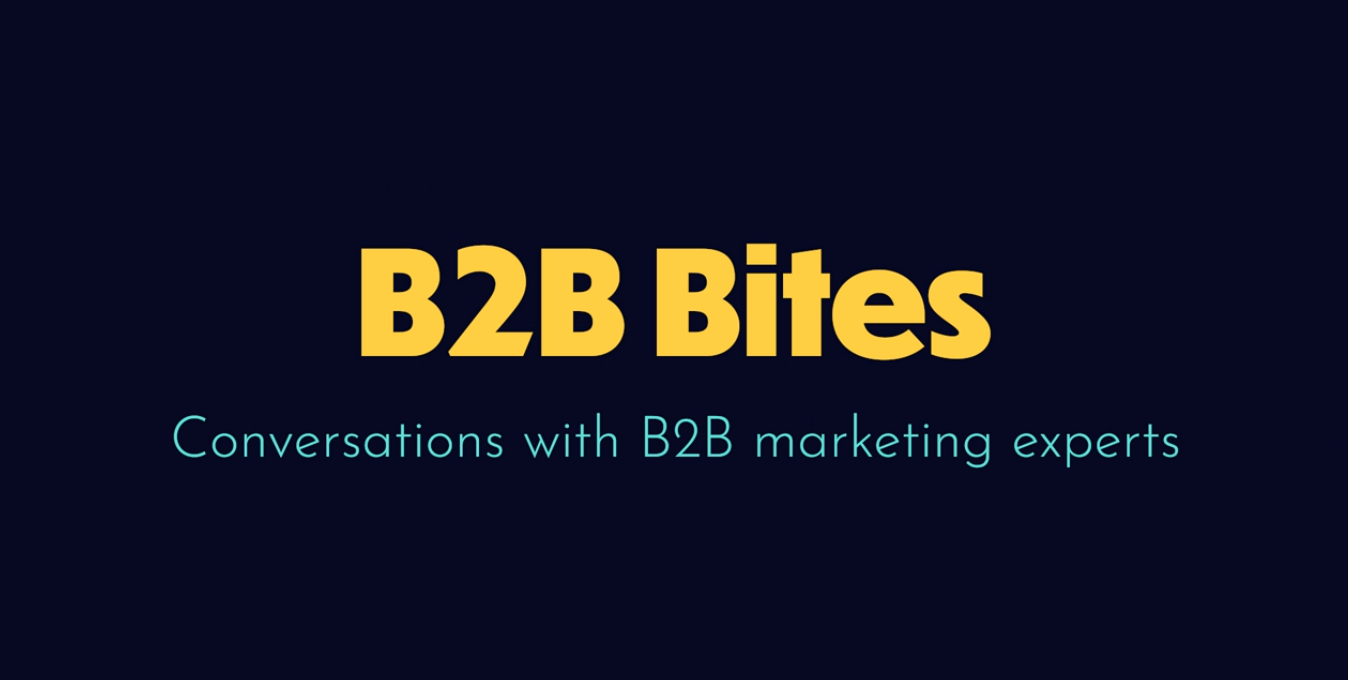As a B2B marketer, you’ve been hearing a lot about account-based marketing (ABM). For one, it is often cited as one of 2019’s hot marketing trends. You might have considered it in the past but you’re still looking to dive deeper.
What is ABM exactly? What’s up with the hype? And how should you explore it?
What is account-based marketing?
“Inbound marketing and account-based marketing are like a taco and a burrito. They have the same ingredients, they're just shaped differently.” - Joe Chernov VP Marketing, InsightSquared
As a B2B marketer, you're likely focused on building a traditional funnel that involves lead generation and nurturing through follow-ups. Account-based marketing is an alternative approach. This strategy drives to focus on revenue, reputation, and relationships.
In a nutshell: ABM designs marketing campaigns around specific prospects. With particular organisations and contacts in mind, assets are personalised to close a specifically targeted deal.
Notice how this perspective is especially relevant for B2Bs? If we’re talking about high-value deals, you’re more willing and able to handpick ideal relationships. Salespeople and marketers would work together in order to close the target account.
See how the funnel is flipped:

Also, note that the prospect’s organisation will likely include multiple stakeholders from a range of teams: HR, marketing, IT, sales, engineering, and more. ABM enables salespeople and marketers to coordinate while interfacing with multiple contacts.
There’s a strategic focus on the group of leads based on accounts and their needs.
By creating personalised messages for the right leads and sending them at the right time, it results in higher conversions and eventually builds a lasting relationship with your preferred accounts.
Why does this matter?
If you're contemplating whether ABM will work for your B2B business, here are key reasons why you might want to dig deeper into this approach.
Harmony between sales & marketing
Marketing and sales teams need to work collaboratively to achieve their goals. In theory this has always been the case, but in practice this can sometimes slip.
Using ABM is a sign of being in sync. Up to 57% of highly aligned companies use targeted content for a specific audience. With ABM, these two teams focus on achieving a common goal - personalisation.
Marketing focuses on researching for audience’s pain points while sales focuses on understanding these needs and delivering personalised content to trigger buying decisions.
Generate greater ROI
As per Sirius Decisions ABM survey, 60% of respondents reported that ABM has a positive impact on influenced and sourced pipeline and revenue. ITSMA’s survey indicates that 84% of companies claimed that their ABM strategy offers higher ROI than other marketing campaigns.
Thanks to ABM, sales and marketing teams develop personalised campaigns and narrow them to see the most effective strategies for their targeted leads.
This helps prevent unnecessary costs, increases conversions, and ultimately closes more ideal accounts.
How might you get started?
If you're interested in what account-based marketing strategy can do for your business but feel a bit overwhelmed with the process, follow these steps to get started:
1. Identify preferred accounts (past and existing)
Analyse your existing database and identify your best customers in terms of the revenue they bring, retention rate, operating costs, and any data that would fit your definition of an ideal customer.
Once you have your list, you then need to figure out what makes those customers highly-valuable. They can be differentiated by revenue, industry, and technographic characteristics. Favour customers who work with tools and systems that happen to integrate well with your product.
2. Look for prospects
After identifying some of your ideal customers, you have a reference for what to look for. You may explore company directories like LinkedIn and AngelList to find “lookalikes” of your preferred accounts.
Once you've identified some target organisations, you’d narrow down to individuals. Look for key stakeholders that can influence the final buying decision. Typically, roles include the Chief Financial Officer, Head of Marketing, HR Manager, and IT Manager.
There’s no need to optimise this too soon. The general idea is for you to get comfortable with the exercise of identifying stakeholders in an ideal target account.
3. Expand your understanding of your target accounts and contacts
Gather intel about your target leads. Here are some guide questions:
- Did they recently raise funds?
- Did a new C-level executive join the company?
- How is their organisation structured?
- Is the company’s mission particularly aligned with yours?
Deeply understanding your target accounts and contacts will help you proceed to the next step, creating your targeted campaign.
4. Design messages and assets
From understanding the interests, needs, and challenges of your targeted leads, you can align your messages and content. Provide personalised and relevant content for each stakeholder to influence their buying decision.
For extra motivation, note that compelling content increases the likelihood of getting your audience to share your materials with their colleagues. This behaviour inspires the buy-in required to close a deal.
5. Identify potential channels
Before testing your first ABM campaign, remember not to skip any of the steps above. A well-thought-out content and engagement will be meaningless if it doesn’t reach the right prospects.
There are several channels that can be used for ABM marketing such as:
- Social Media
- Video
- Blogs
- Ebooks
- Webinars/Virtual events
You should prioritise channels that have proven to drive the highest revenue for your business and craft content that will resonate with your audience. Inform this decision with some historical data then proceed to start testing.
Now over To You. Review your customer list. Out of your 100 customers, how many of them are preferred? If we’re to subscribe to the Pareto principle, a handful of your accounts generate most of your desired results.
If the disparity is evident, you’ll want to disproportionately focus on the best accounts. If fewer than 20% of your customers provide high value, you'd want to invest in heavily personalised ABM initiatives to generate more such accounts.
Looking to further explore account-based marketing? Let’s talk.









